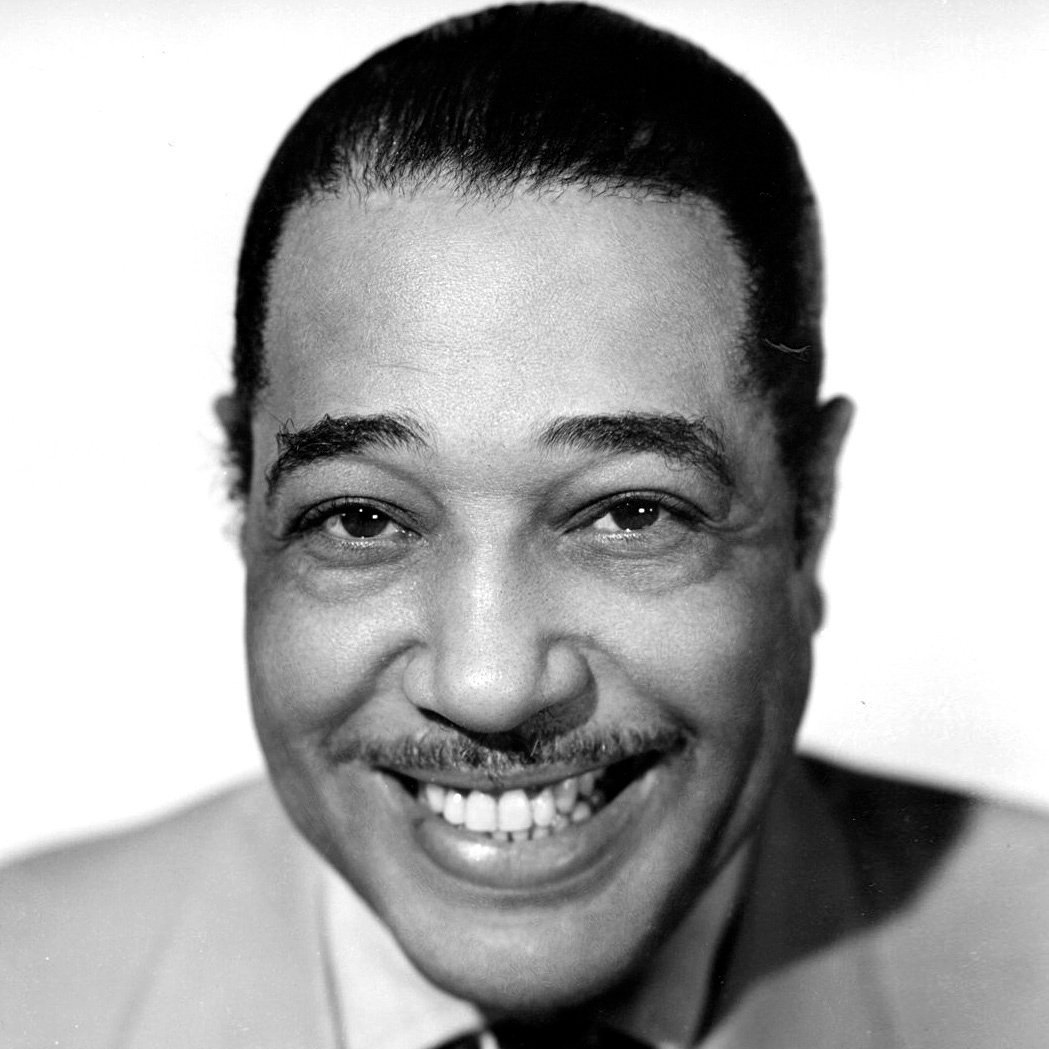Ellington: Les Trois Rois Noirs
by Chris Vaneman
Duke Ellington (1899-1974)
"There are simply two kinds of music: good music, and the other kind."
Thus wrote Duke Ellington in 1963, and Ellington’s vast, five-decade career both testifies to and demonstrates that assertion. Ellington’s 20,000 performances, his output of 3,000 songs, pieces, and arrangements – they all point back to that central fact.
Edward Ellington’s maternal grandparents had been enslaved, but he grew up in middle-class stability in segregated Washington D.C. On the family piano his father played the latest ragtime hits when his mother wasn’t playing operatic arias, and not long after beginning piano lessons himself at the age of seven the boy was given the nickname “Duke” in reference to his precocious poise and dignity. He was playing professionally in less than a decade, and turned down collegiate scholarship offers in art to build his musical career.
By his mid-twenties he was a respected bandleader and songwriter as well as a pianist, and a five-year run as music director at Harlem’s famed Cotton Club made him one of America’s best-known musicians. By the time he left the Cotton Club, in 1932, in order to tour Europe with his band, Ellington’s sophisticated arrangements and compositions had gone a long way towards transforming jazz from a steamy vernacular music of illegal gin joints into the broadly respected art it is today. His innovations in orchestration and form and his group’s virtuosity and polish made jazz at home in the concert hall as well as the nightclub.
By 1943 he had pushed onto the symphonic stage with his suite Black, Brown, and Beige, and while he continued to write for and lead his big band for decades, much of his creative energy in the next decades was devoted to blurring the distinction between “classical” and “jazz” – in effect, to recreate in the minds of the world the happy musical cohabitation of his parents as they shared the family piano. He and his band became the US State Department’s go-to goodwill ambassadors, performing thousands of concerts all over the world. During his life, he was awarded both the French Legion of Honor and the American Presidential Medal of Freedom; after his death in 1974, he was depicted on the face of a commemorative quarter and a USPS postage stamp.
The Three Black Kings – or, as Ellington’s puckish humor led him to call it in rhyming French, Les Trois Rois Noirs – was the very last of his 3,000 musical works. It had been gestating ever since the 1968 assassination of his friend, Rev. Martin Luther King, Jr, but it was Ellington’s final illness that spurred him to complete it. Not that he actually did so: he dictated much of it on his hospital bed to his son Mercer, but it fell to Mercer, with help from the eminent arranger Luther Henderson, to ready the piece for performance. It was finally premiered in 1976 as a ballet, choreographed by the great Alvin Ailey, rather than a concert piece.
It’s not uncommon for especially good ballet music to live even more vibrantly in the concert hall than onstage (think The Rite of Spring or Bolero, for instance), and that’s the format we most often encounter The Three Black Kings in, as well. The piece’s closing section, a rousing, slow gospel groove that a solo saxophone propels to a soaring climax, was a celebration of and tribute to King after his murder. As was the composer’s habit, Ellington linked the story of the present – in the person of Dr. King – to the past, by preceding it with sections devoted to great Black kings of the past. The first of these, Balthazar (one of the three kings who brought gifts to the infant Christ, Balthazar was, in European tradition, Black), inspires the piece’s intensive, percussive opening section. That gives way to a lush, colorful, and mercurial portrayal of Solomon, celebrated here for the worldly splendors of his court as much as for his wisdom.
“Beyond genre” was the phrase Ellington lived by, and it is well embodied by the glorious celebration of human possibility that is The Three Black Kings.

